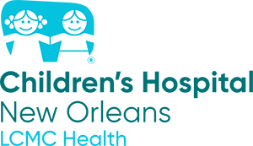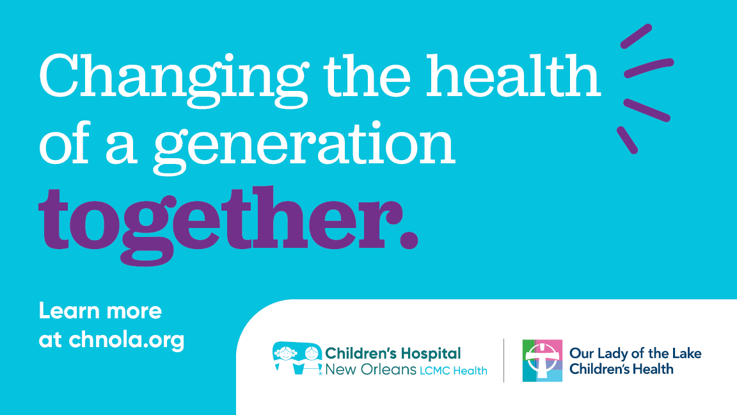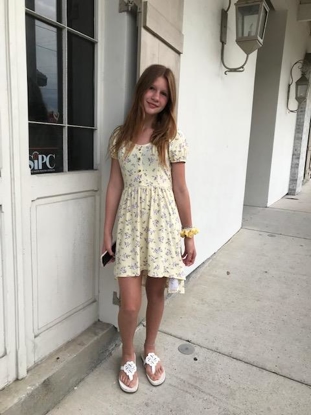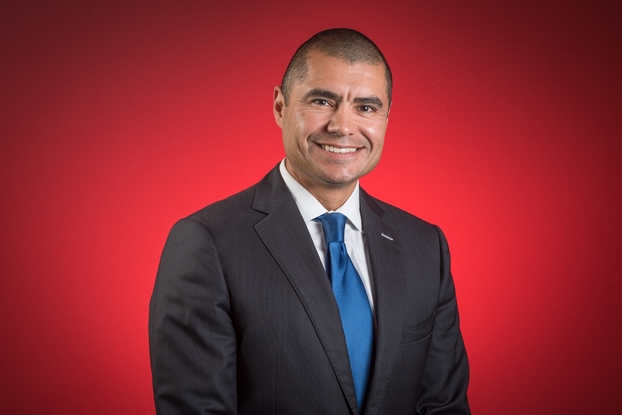Aurora’s story: How my miracle baby beat the odds following HLHS diagnosis
- Category: Cardiology, Living Well, Patient Stories
- Posted on:
.jpg)
“Though she be tiny, she is fierce.”
In many ways, these words describe the life story of Aurora Viscardis, a 1-year-old heart warrior, who despite being small and fragile, overcame one obstacle after another with tenacity and courage. Her mother, Victoria, always thought her baby was healthy while growing in her womb. She never realized her daughter would face a myriad of potentially life-threatening heart problems after she was born..jpg)
“There were no signs of any complications at all,” said Victoria. “After every ultrasound, my OB-GYN told me Aurora was growing and developing normally. At 37 weeks, my OB-GYN sent me to the hospital to get an ultrasound to check on my baby’s growth and weight. As the ultrasound technician scanned my belly, she noticed something unusual and called the nurse to take a look. The nurse told me Aurora was too small and she wasn’t growing anymore inside my belly. She said you are not leaving here without a baby. She called my OB-GYN, and I was transferred to labor and delivery. I was induced on the same day. Then, my water broke in the middle of the night, and I started feeling the contractions. Once I got my epidural, everything progressed pretty quickly. A few strong pushes later, my daughter was here.”
Aurora was born on July 2, 2022, at a hospital about four hours away from New Orleans. When she was born, she was treated for a respiratory infection. After getting her checked out, the nurses then placed Aurora on her mother’s chest for skin-to-skin. Aurora weighed just over 5 pounds and her oxygen level was low. She was breathing kind of fast. The pediatrician said that was normal, and her baby was fine.
.jpg) “I was happy to see my baby for the first time,” said Victoria. “I was like, ‘Oh my goodness, I am really a mom.’ It was such a surreal and unforgettable moment to kiss, hold and cuddle Aurora in my arms after carrying her in my belly for nearly nine months. My motherly instincts naturally kicked in. I was thrilled to be a mother, but I was sad my dad wasn’t there to see his first grandbaby because he passed away a year ago. My mother was with me, and she adored Aurora. My precious daughter was a gift from God.”
“I was happy to see my baby for the first time,” said Victoria. “I was like, ‘Oh my goodness, I am really a mom.’ It was such a surreal and unforgettable moment to kiss, hold and cuddle Aurora in my arms after carrying her in my belly for nearly nine months. My motherly instincts naturally kicked in. I was thrilled to be a mother, but I was sad my dad wasn’t there to see his first grandbaby because he passed away a year ago. My mother was with me, and she adored Aurora. My precious daughter was a gift from God.”
Victoria enjoyed bonding with her new bundle of joy. Then, in mid-July, when Aurora was a few weeks old, she began displaying some strange symptoms at home. She was fussy, angry, and cried all the time. Nothing seemed to calm her down. Her pediatrician suggested Victoria switch from milk to soy formula to help ease her baby’s colic. When Aurora developed a cough that wouldn’t go away, her pediatrician said her baby had allergies. Then, a few days later, Aurora’s skin had a bluish tinge to it. When she told her pediatrician about it, she said some babies turn blue when they are cold. She suggested wrapping her in a blanket to keep her warm. When Victoria bundled her baby, the bluish tinge sort of went away.
“My mother and I still had this feeling something was wrong with Aurora,” said Victoria. “We kept telling the pediatrician that something wasn’t right. She didn’t have allergies, she didn’t have colic, and her skin was turning blue. Every time we raised our concerns, the pediatrician dismissed it. She said Aurora was fine and there was nothing to worry about. My mom and I weren’t really sure what to think about this.”
When Aurora had her one-month checkup, she was till acting fussy. Her pediatrician, who still believed the baby had colic, suggested Victoria change her milk again. Then, while at her pediatrician’s office, Aurora’s feet turned blue. That’s when the pediatrician told Victoria to rush her baby to the hospital. When they arrived, Aurora’s oxygen levels were down to 40. A swarm of doctors rushed into the room to check on her. One of the physicians told Victoria they did not have the expertise nor the resources to take care of Aurora. The doctor suggested her baby be airlifted to Children’s Hospital New Orleans to receive the lifesaving care she desperately needed. Immediately, the Children’s Hospital Pediatric Critical Care Air Transport picked up Aurora and transported her to the hospital on August 14, 2022.
“Aurora resembled the color of a blueberry when she arrived at Children’s Hospital,” said Victoria. “I was still driving to the hospital when the team at Children’s called me to explain what was going on. They had to perform an operation on Aurora as soon as possible to stabilize her condition since her oxygen levels were dropping. I gave them consent over the phone to proceed with surgery. Aurora was living with a pinhole of oxygen because most babies who have her heart condition, don’t live passed five days without surgical intervention, and my baby lived for a whole month, which was an absolute miracle.”
Aurora was diagnosed with Hypoplastic Left Heart Syndrome (HLHS), a complex congenital heart defect in which the left side of the heart is underdeveloped and cannot pump oxygen-rich blood to the body. Besides an under-developed mitral valve and aortic arch, Aurora had a nearly intact atrial septum, which is a partial or complete closure between the left and right upper chambers (atria) of her heart, as well as Double Outlet Right Ventricle (DORV), in which the pulmonary artery and the aorta – the heart’s two major arteries – both connect to the right ventricle. In a normal heart, the aorta is attached to the left ventricle. Aurora also had a subaortic conus and additional tricuspid valve tissue, both of which put her at risk of developing subaortic obstruction, a narrowing at the outlet of the left ventricle below the aortic valve.
“Because of her significant 6-week delay in diagnosis, Aurora had a nearly intact atrial septum by the time she was referred to us for care,” said Dr. Timothy Pettitt, a cardiothoracic surgeon and surgical director of Congenital Heart at Children’s Hospital. “When she arrived via helicopter, she was cyanotic (blue in color) due to deficient oxygen levels in her blood. We immediately performed an emergent balloon atrial septostomy to relieve the septal obstruction and improve oxygen flow to her body.”
On August 21, 2022, 1-month-old Aurora underwent her first open-heart surgery. Because Aurora had only a right ventricle and both great vessels (pulmonary artery and aorta) came off the right ventricle which increased the potential for subaortic stenosis, Dr. Pettitt performed the Sano-Norwood procedure to rebuild Aurora’s heart so the right ventricle can take over both jobs of pumping blood to the lungs and to the body. The surgery involved connecting the pulmonary and aortic valves together to create a “double barrel” outflow which was connected to the reconstructed and patched aortic arch, which is the segment of the aorta that distributes blood to the head and the upper extremities. Since the pulmonary valve was used to “bypass” the potential for subaortic/aortic obstruction, a Sano shunt (a Gore-Tex tube graft) was placed from the right ventricle to the pulmonary arteries, creating a pathway for blood flow..jpg)
After her surgery, Aurora was doing well as she recovered in the pediatric intensive care unit. She was only on oxygen for a few days but even when she was hooked up to the machine, she was breathing passed the machine, which impressed her doctors and nurses. When Victoria was told that her baby would need heart surgery, she was nervous at first, but she knew her daughter was in the best hands.
“Before surgery, Dr. Pettitt drew me pictures to explain the normal function of the heart, and what was wrong with Aurora’s heart, and how he would repair my baby’s heart,” said Victoria. “He put my mind at ease and made me feel comfortable about the surgery. When Dr. Pettitt reviewed Aurora’s ultrasounds from the other hospital, he noticed her heart problem instantly – it was not hard to miss. I believe God directed my daughter’s care to Children’s Hospital. If it weren’t for Dr. Pettitt and the experienced team of doctors and nurses here, the outcome would be different. The team knew what they were doing – and that made the difference in the world and the reason why my daughter is here with me today.”
Since Aurora’s heart condition, HLHS, is treated with a series of three open-heart surgeries, Aurora underwent her second heart surgery – the Glenn procedure – when she was 7 months old. In February 2023, Dr. Pettitt performed the Glenn which re-routes blood flow from the upper body to the lungs.
The Fontan, which is done at 3 to 5 years of age, is the last open-heart procedure to treat HLHS. In this surgery, a separate channel is constructed to direct blood to the pulmonary artery. The blood from the upper body travels directly to the lungs to pick up oxygen without passing through the heart.
Today, 1-year-old Aurora is doing well and has had no hospitalizations since her last surgery. She continues to have regular follow-up appointments with her pediatric cardiologist in Alexandria.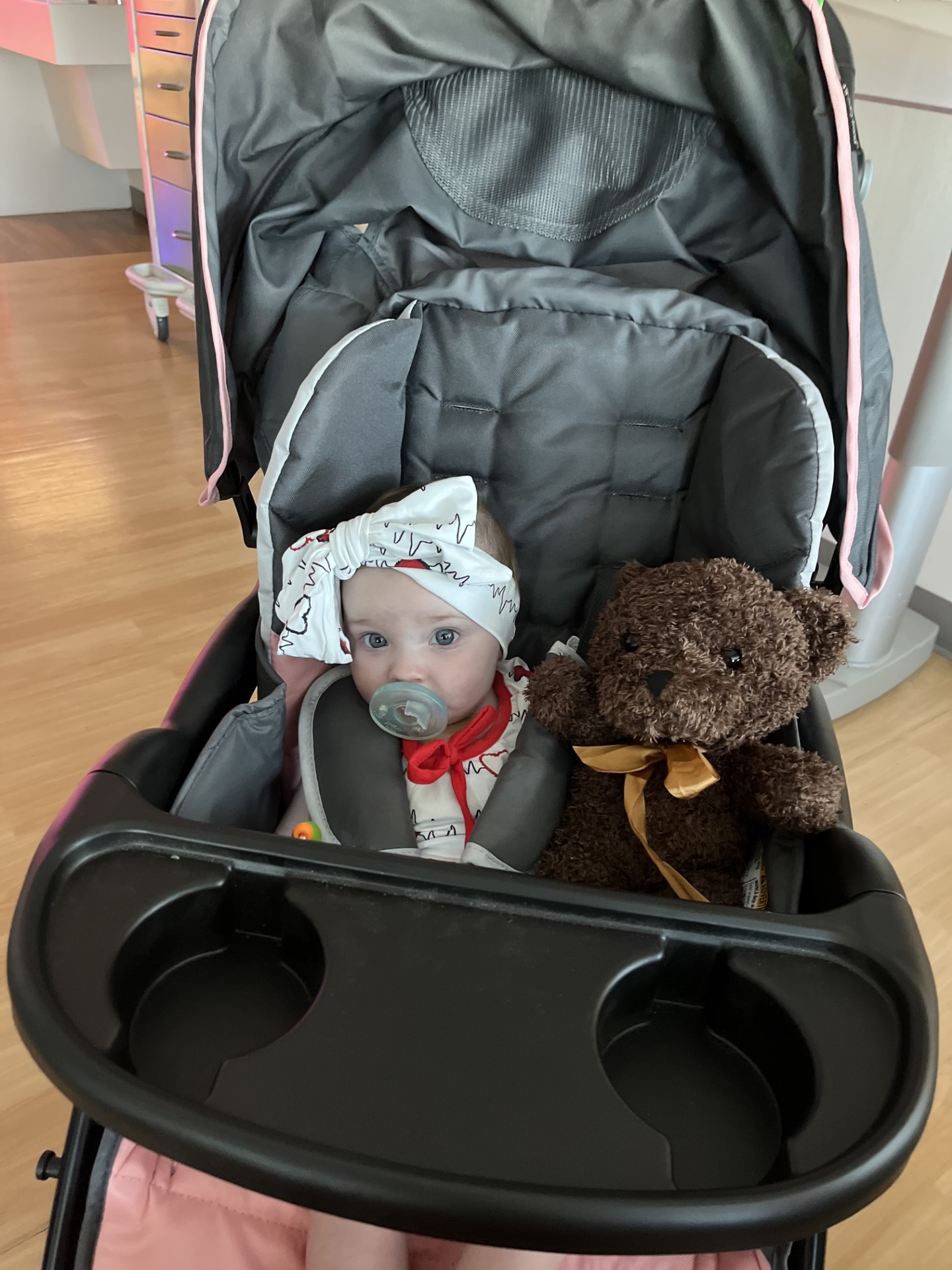
Despite her daughter’s unexpected heart journey, Victoria counts her blessings every day. Through the ups and down, she says the lesson she learned from this – always trust your gut instinct in everything.
“Your gut feeling is always right,” said Victoria. “Following my gut instinct helped me ensure Aurora got the care she needed. My decision to take her to Children’s Hospital ultimately saved my daughter’s life. While she will need to have another heart surgery in the future, my mom and I have faith in God and in her surgical team that everything will be fine. As Aurora’s mom, I have to be strong for her. I have God on my side and my dad watching from above. Aurora is a small but fierce heart warrior who has taught me to stay strong and never give up – and that’s the same advice I have for other patient families. Keep fighting. Never give up, and always know you are never alone. Everything will get better eventually.”
The Heart Center at Children's Hospital New Orleans provides comprehensive evaluation and treatment of patients with congenital cardiovascular disorders.Click here for information about our Heart Center.
